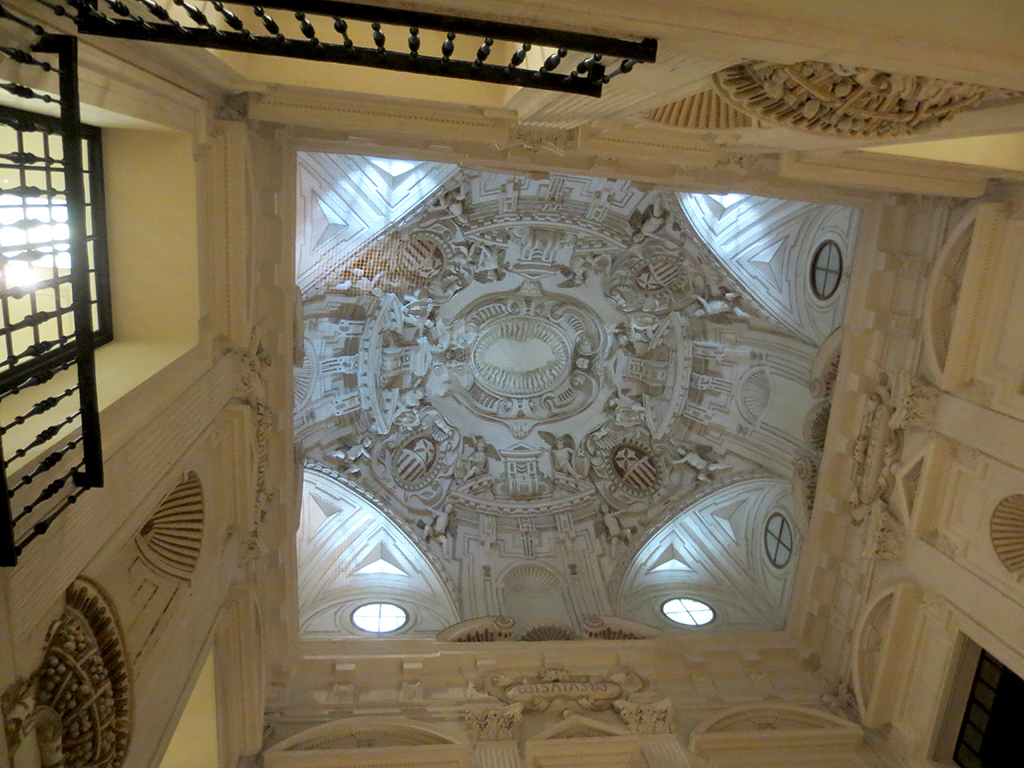On our second evening we visited the Museo de Bellas Artes de Sevilla (Museum of Fine Arts of Seville) located inside a former convent building constructed in 1594.
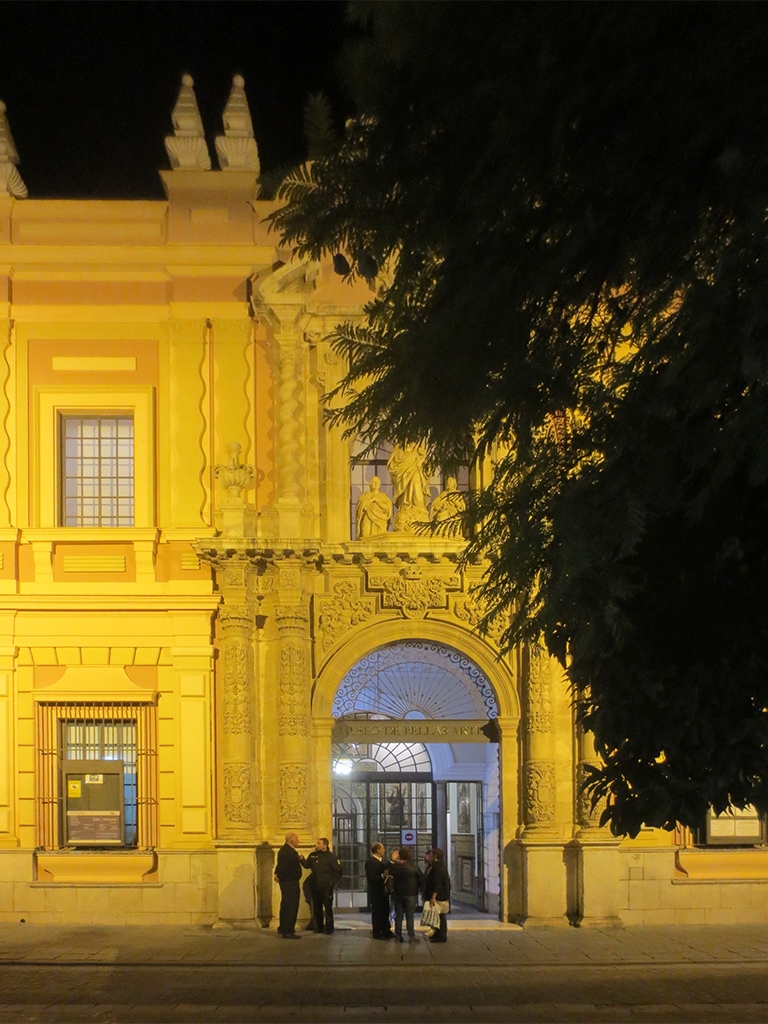
Although non-EU residents are supposed to pay €1.50 to enter, a friendly guard gave us our two tickets at the entrance for free.
The building contains multiple courtyards surrounded by elaborate tiles and arches. Unfortunately, since it was dark when we visited, we didn’t get the full effect of sunshine and light they would normally provide into an otherwise dark space.
Josie did manage one decent photo of a courtyard with a well, however.
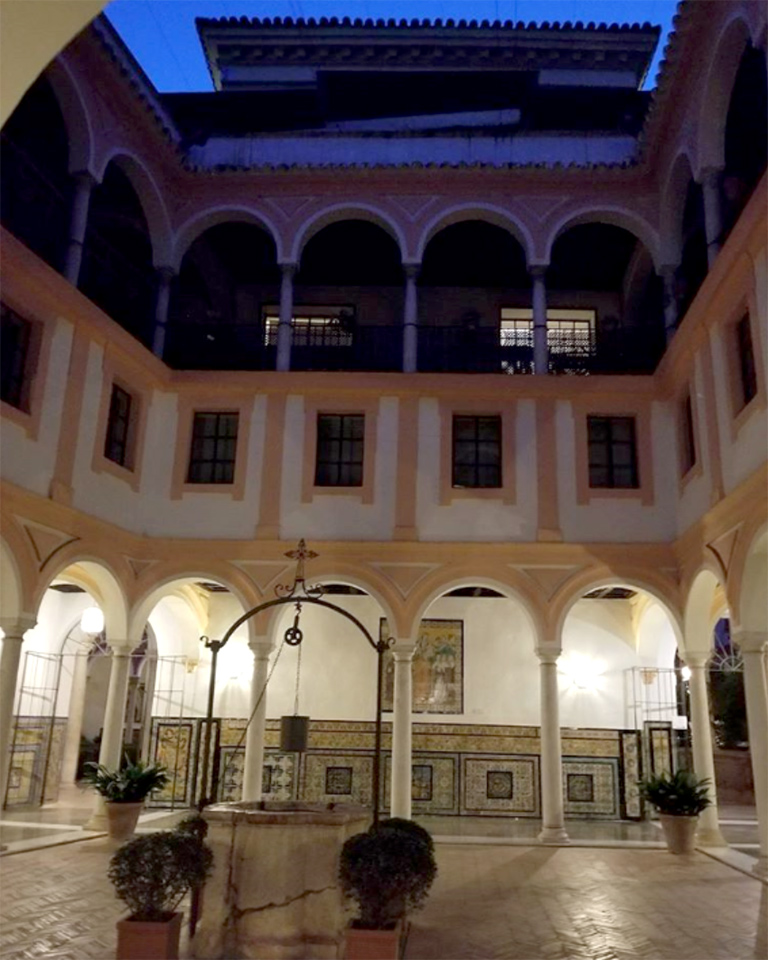
The art is mainly of the Spanish religious variety, often very dark and quite gory. Some of the more recognizable artists on display include El Greco and Diego Velázquez.
On the goriest of the gory end we found a sculpture titled Cabeza de San Juan Bautista (Head of Saint John the Baptist). It dates to 1591 and the artist, Gaspard Nuñez Delgado, seems to have taken great joy in carving the exposed veins and bones of the severed neck.
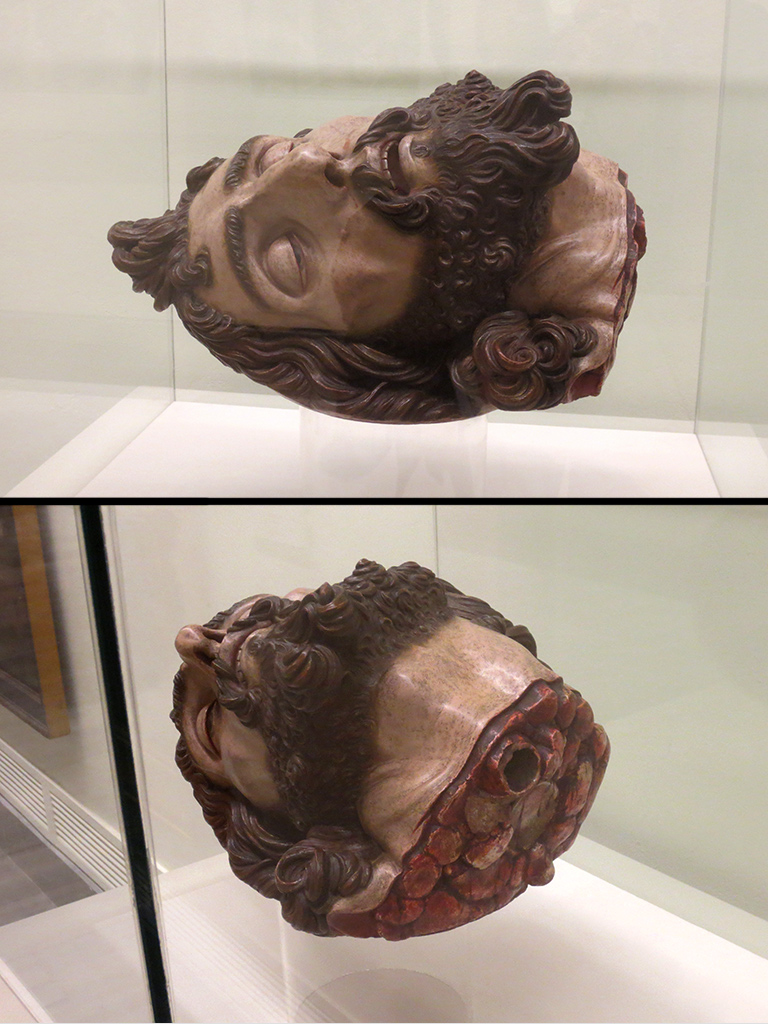
Hidden amongst the many Saints and Jesuses I did come across a few landscapes. I particularly liked this view of Seville painted around 1621 by Flemish artist Louis de Caullery. What’s interesting is that several of the landmarks clearly visible in the painting — such as the Cathedral’s Giralda (bell tower) and the Torre del Oro (Gold Tower) — remain today in very recognizable form.
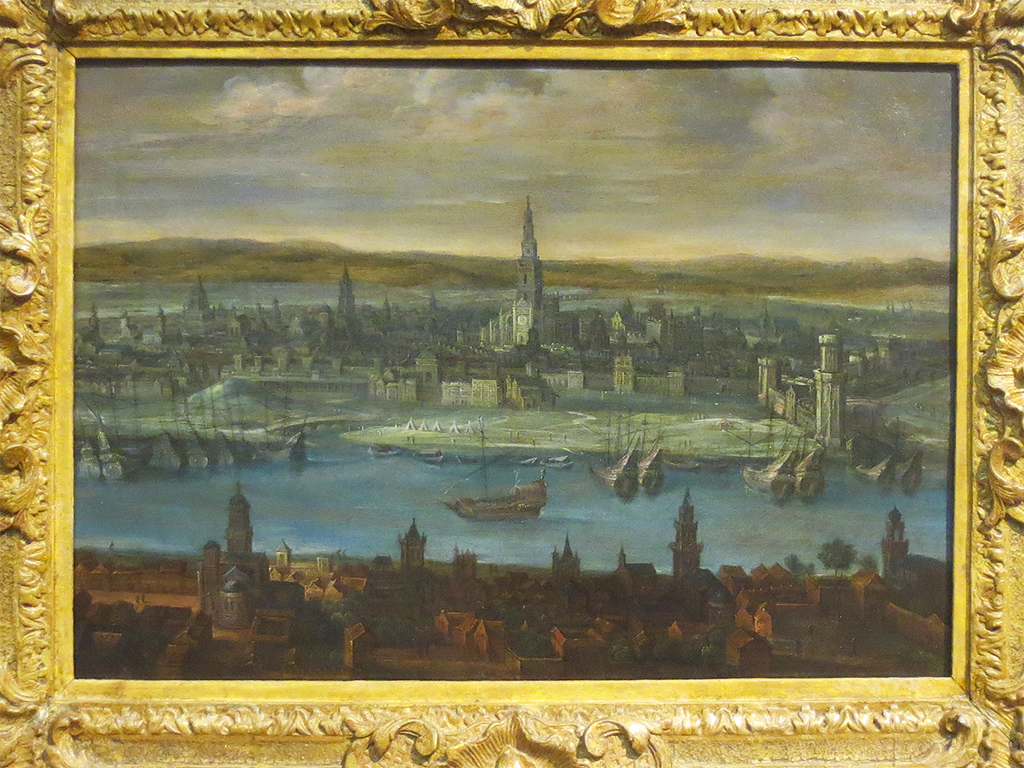
An elaborate staircase connected the upper and lower floors of the museum.
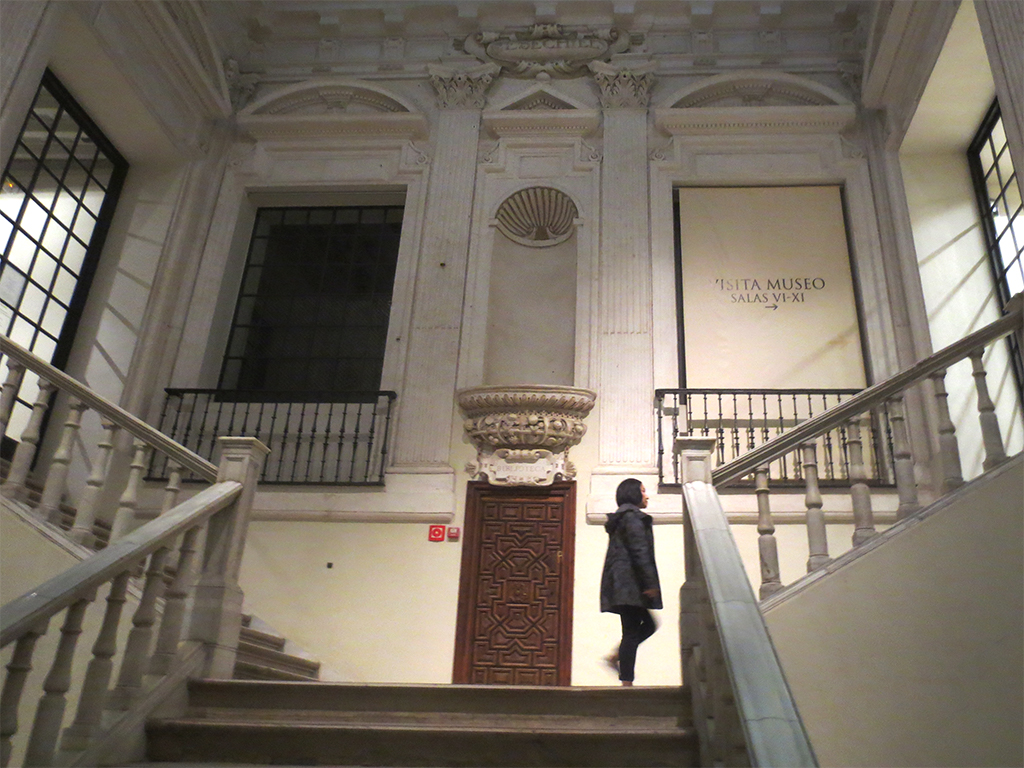
Ornate details were found everywhere, including on the ceilings.
